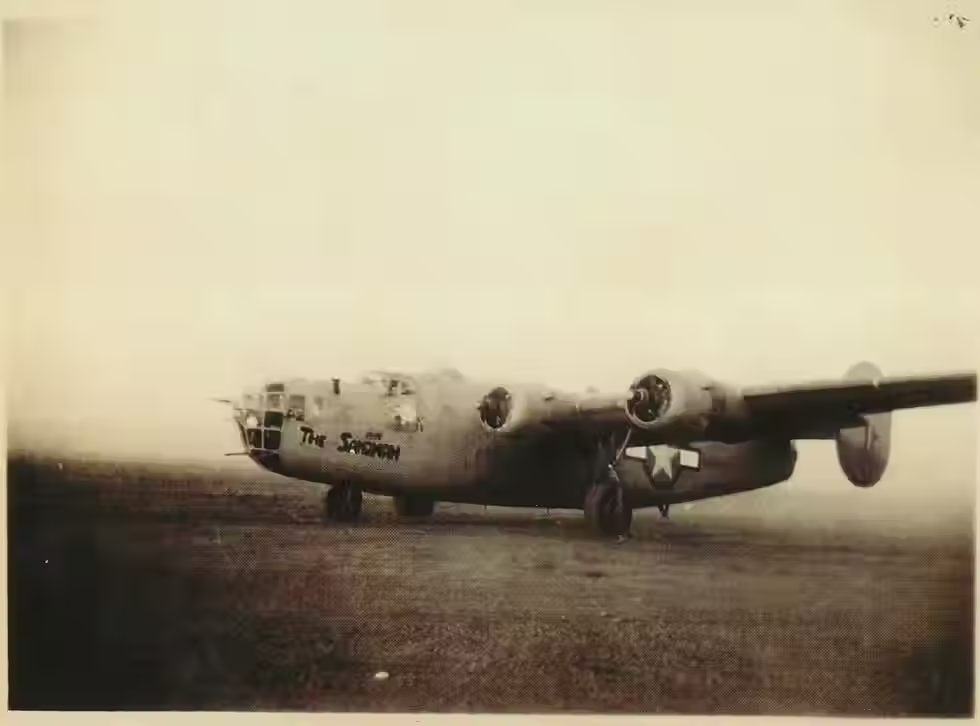The Ill-Fated Operation Tidal Wave
- Dennis L. Peterson

- Aug 1
- 3 min read
When the airmen were awakened at 2:30 a.m. on Sunday, August 1, 1943, had their breakfast, and attended their pre-flight briefing, the skies were clear. It promised to be a good day for flying. Things were quite different, however, by the end of the day.

Their planes' fuel tanks, including those that had been added to the bomb bays of the B-24 Liberator bombers they would be flying, were filled to their capacity to enable the longest bombing mission to that point in the war. From their take-off point near Benghazi, Libya, to the target was 1,350 miles, a 14-hour or more round-trip flight.
Code named Operation Tidal Wave, the mission objective was to seriously degrade, if not destroy, one of the most productive of Nazi German's petroleum-producing complexes: the seven oil refineries around Ploesti, Romania, which was about 30 miles north of Bucharest, the capital.
Those facilities produced one-third of the fuel for Germany's war machine. Consequently, it was one of the most heavily defended targets in the Reich. More than 230 anti-aircraft guns, about 400 fighter planes, and numerous barrage balloons protected the area. This mission clearly would be no "milk run," as bomber crewmen referred to "easy" missions on which they faced only light, if any, opposition from enemy flak or fighters.
The components of the operation were three bomb groups of the Eighth Army Air Force in England and two bomb groups of the Ninth Army Air Force in Libya. The target was too far from England, so the Eighth Air Force's B-24 Liberators had to be flown to Libya before heading for Ploesti. In all, 178 B-24s, divided into two waves and under the command of Brigadier General Uzal G. Ent, took off between 0400 and 0500 that morning.
Things went badly from the start. Over the Adriatic Sea, one of the lead planes mysterious crashed. Since they had been ordered to proceed under radio silence, no one was quite sure what had happened to it. After climbing to clear the mountains of Albania, the formations encountered towering cumulus clouds. Some of the B-24s climbed above them, others went below them, and a few went through them, but they became separated and disorganized.
According to their orders, however, they all descended dangerously low to avoid German radar and flew at tree-top height toward their targets. When some of the planes mistook a land feature for their directional landmark and turned too early, one plane broke radio silence to warn them of their mistake. They thereby lost the element of surprise. By the time they arrived over their targets, the Germans were ready for them. Flak was very heavy.

Despite the flak, the bombers in the first wave maintained their speed and altitude, barely missing the refineries' chimney tops. (In fact, one plane returned to Benghazi with corn stalks sticking from its bomb bay doors.) Their orders were, "After 'bombs away,' it's every man for himself! Hit the deck! Forget formation flying! Don't slow down to help any crippled airship. Get out of there!"
And that's what they did, although they were heavily attacked by German fighters.
The Germans were ready for the second wave when it arrived, and they let them have it. Some of the bombs that the first wave had dropped had delayed fuses, and they began exploding just as the second wave came over, rocking the B-24s and obscuring their vision of the targets with heavy black smoke.

The Ploesti raid was costly to the Americans. Of the 178 planes that had taken off that morning, only 88 managed to make it back to their Benghazi base. In addition to the 90 planes lost, 310 airmen were killed, 108 were captured, and 78 were interned in Turkey. For their valor, however, five officers received the Congressional Medal of Honor. Tragically, Lieutenant Colonel Addison Baker, Major John Jerstad, and 2nd Lieutenant Lloyd Hughes received their medals posthumously.

Such was the heavy price paid for less return than had been expected or hoped for. Although the attack destroyed 3,925,000 tons of the facilities' 8,595,000 tons annual production (roughly 46 percent), the Germans quickly repaired the damage and resumed production in just a few months. In fact, one of the facilities was back to 100 percent production by mid-September.
The Army Air Force had learned a costly lesson, and never again was such a low-level bombing mission attempted.



Comments